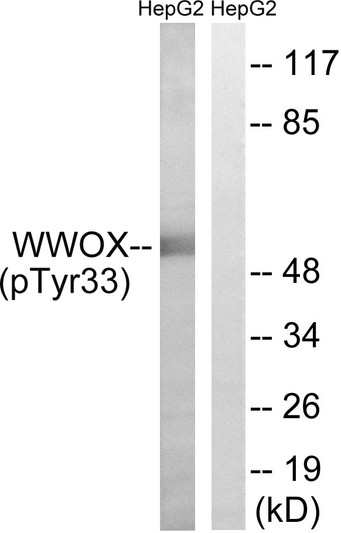| Post Translational Modifications | Phosphorylated upon genotoxic stress. Phosphorylation of Tyr-33 regulates interaction with TP53, TP73 and MAPK8. May also regulate proapoptotic activity. Phosphorylation by TNK2 is associated with polyubiquitination and degradation. Ubiquitinated when phosphorylated by TNK2, leading to its degradation. |
| Function | Putative oxidoreductase. Acts as a tumor suppressor and plays a role in apoptosis. Required for normal bone development. May function synergistically with p53/TP53 to control genotoxic stress-induced cell death. Plays a role in TGFB1 signaling and TGFB1-mediated cell death. May also play a role in tumor necrosis factor (TNF)-mediated cell death. Inhibits Wnt signaling, probably by sequestering DVL2 in the cytoplasm. |
| Protein Name | Ww Domain-Containing OxidoreductaseFragile Site Fra16d OxidoreductaseShort Chain Dehydrogenase/Reductase Family 41c Member 1 |
| Database Links | Reactome: R-HSA-1251985Reactome: R-HSA-8866904Reactome: R-HSA-8866907 |
| Cellular Localisation | CytoplasmNucleusMitochondrionGolgi ApparatusLysosomePartially Localizes To The MitochondriaTranslocates To The Nucleus Upon Genotoxic Stress Or Tnf StimulationTranslocates To The Nucleus In Response To Tgfb1Isoform 5 And Isoform 6 May Localize In The NucleusLocalized To The Lysosome Probably Upon Binding To Vopp1 |
| Alternative Antibody Names | Anti-Ww Domain-Containing Oxidoreductase antibodyAnti-Fragile Site Fra16d Oxidoreductase antibodyAnti-Short Chain Dehydrogenase/Reductase Family 41c Member 1 antibodyAnti-WWOX antibodyAnti-FOR antibodyAnti-SDR41C1 antibodyAnti-WOX1 antibody |
Information sourced from Uniprot.org










